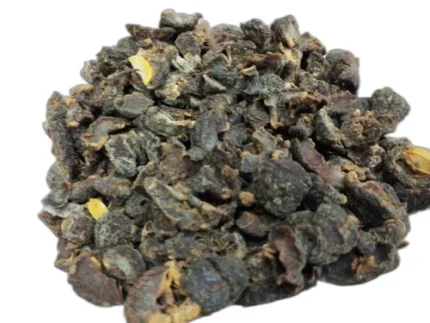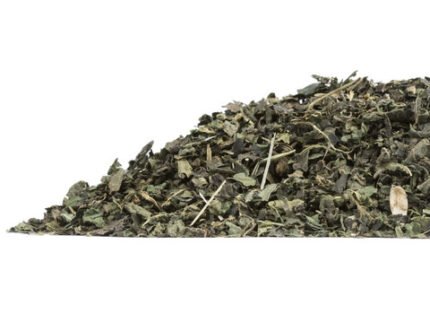Description
PHOOL MACHKAN – Desi Jadi Buti – It is commonly referred to as Kanak Champa, Muchakunda or Karnikar Tree within its native range. Pterospermum acerifolium, the bayur tree or karnikara tree, is a flowering plant indigenous to Southeast Asia, from India to Burma. It is most likely to grow naturally along forested stream banks. In the Philippines, it is known as Bayog.
Other common names include Bayur Tree, Maple-Leafed Bayur Tree, and Dinner Plate Tree. It is a relatively a large tree, growing up to thirty meters tall. Mostly planted as an ornamental or shade tree, the leaves, flowers, and wood of a Bayur Tree can serve a variety of functions.
Also known as the Maple-leaved Bayur tree and Muchkund. The Kanak Champa belongs to Sterculiaceae (Sterculia family). Native to the foot of the Himalayas, Sikkim, Khasi Hills, Manipur, Burma and Java, the tree is usually cultivated as an ornamental tree and finds extensive use in landscaping.
It’s the flowers and leaves of this tree that are the most useful part when it comes to health benefits. Kanak Champa finds use in Ayurveda, where its flowers and leaves are used in treating headaches, ulcers, wounds, coughs, colds, bleeding disorders, etc. While the flowers are rubbed into a paste to treat hemicrania or headaches and also kept among clothes for their perfume and as insect repellants, the leaves treat wounds and itches.
The flowers of the Bayur tree can serve as a pleasant perfume and can even keep away insects. The flowers also provide a number of medicinal uses. An effective tonic can be prepared, as well as being used as a cure for inflammation, ulcers, blood problems, and even tumors.
However, the most interesting benefit of the leaves is that they double as ‘dinner plates’. That’s right – owing to their rather large and decent size. The leaves are woven into dinner plates and hence the tree in some parts of India has earned the nickname ‘Dinner Plate Tree’. The mature leaves can reach a length and width up to 35 cm, and so find lots of use during serving food, or as packaging and storage material.
From serving as an ancient material to reinforce roofs and prevent leaks, to a surface for drying tobacco (in Burma), to even serving as kindling for fire, the leaves are versatile. Meanwhile, the wood, which is rather durable and flexible, makes for the right material for planks and wooden boxes. As for the bark, it helps in cases of scabies and interestingly, in topical preparation of lipsticks.
PHOOL MACHKAN – KANAK CHAMPA – DRY MACHKAN FLOWER Benefits:
Helps us in preventing and curing the following:
- Muchkun flowers and leaves are used in treating headaches, ulcers, wounds, coughs, colds, bleeding disorders, etc.
- Muchkun flowers are rubbed into a paste to treat hemicrania or headaches
- The flowers of the Bayur tree can serve as a pleasant perfume and can even keep away insects.
Other Names:
phool machkan, muchkun phool, kanak champa , karnikar, dry machkan flower, pterospermum acerifolium, bmoragos, mucukunda, chi zi shu, kanak champa, muchkund,, padma pushp, parivyadh, shripad, cerukonna, malanjutali, karnikar, mushukundo, karnikar, muchukunda, hathipaila, vennangu, matsakanda, mayeng
Safety Information:
- For Natural Taste & Freshness, Keep it in cool and dry place.
- Avoid direct Sunlight & Do not Refrigerate.
- Store the contents in an Airtight Container after opening the package.
- All herbal medicine should be used under Medical Supervision only.












